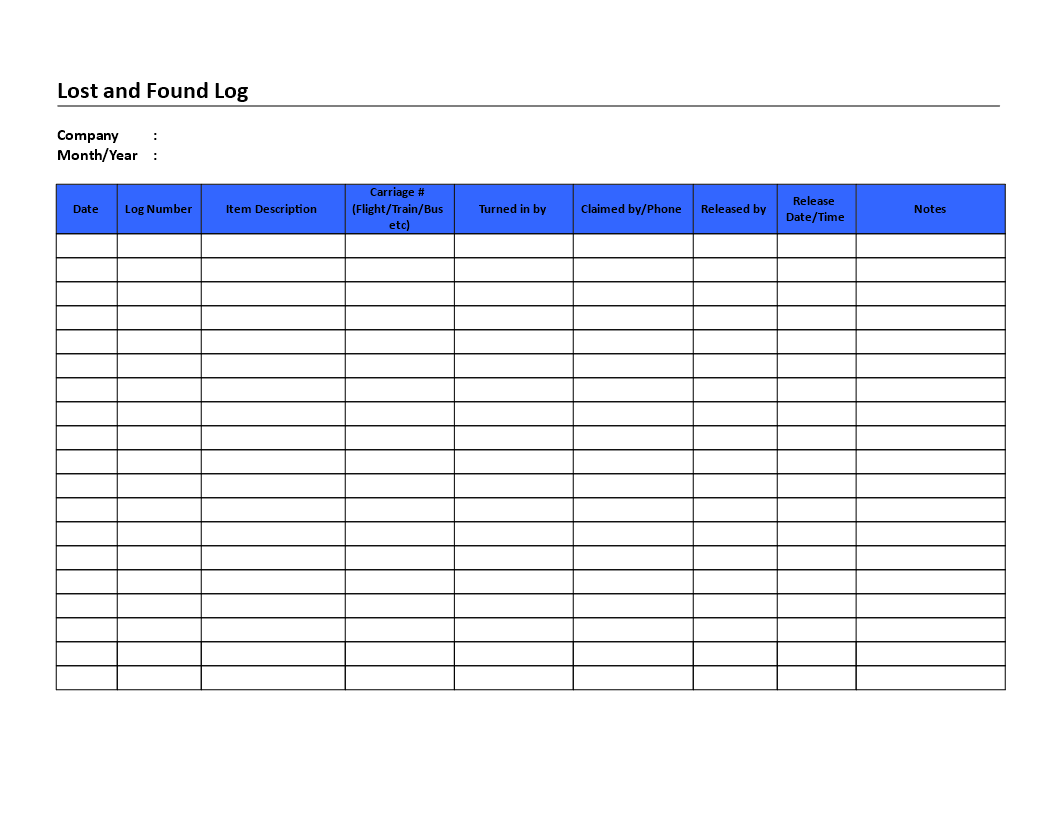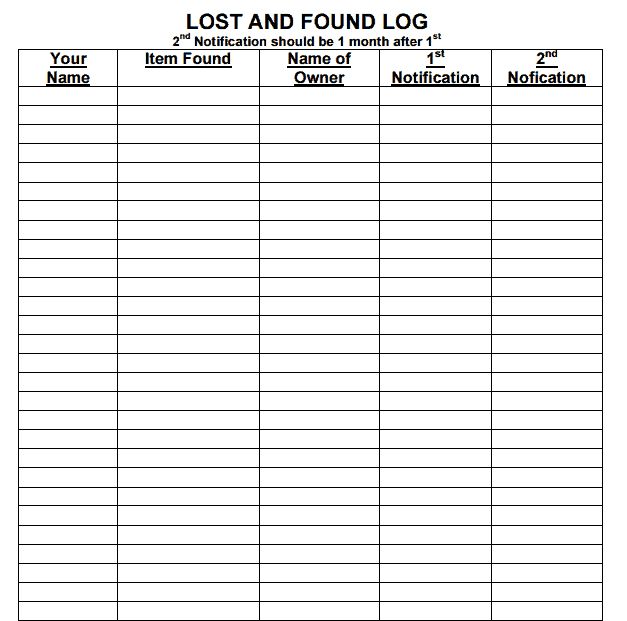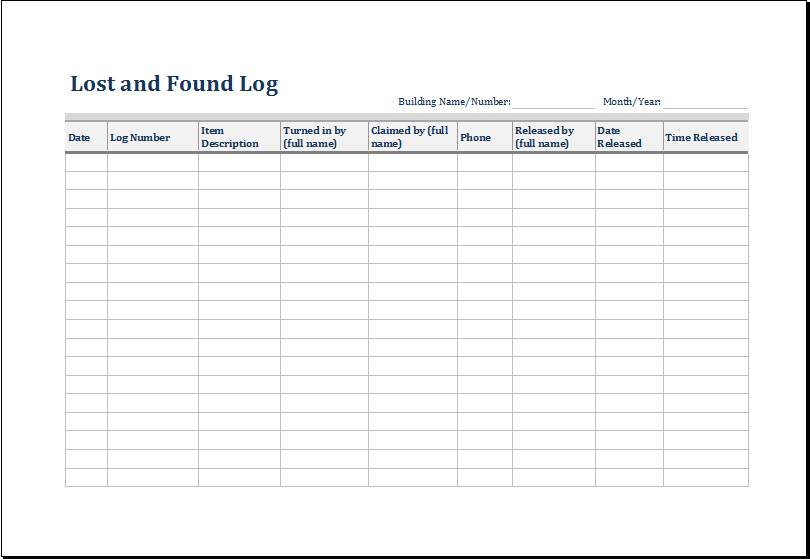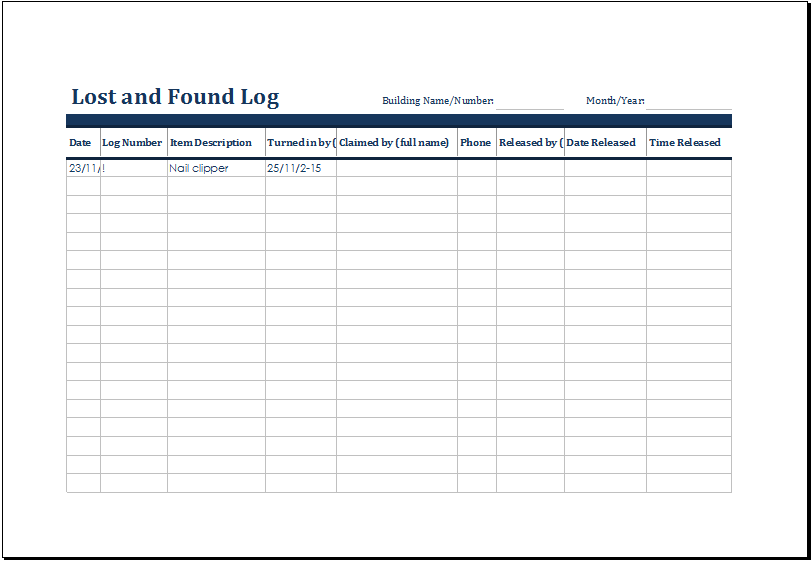
Have you ever lost an item and struggled to remember where you last saw it? Or have you found something and wanted to document the details? Keeping a lost and found log can help you stay organized and increase the chances of reuniting lost items with their owners.
In this article, we will explore the importance of a lost and found log template, how to create one, and its benefits in various settings.
What is a Lost and Found Log?
A lost and found log is a document used to record information about lost or found items. It serves as a central repository of information, making it easier to track and manage lost items. The log typically includes details such as the item’s description, location, date, time, and contact information of the person who found or lost the item.
Where Can You Use a Lost and Found Log?
A lost and found log can be used in various settings, including:
- Hotels: Hotels often have a lost and found department where guests can report lost items or inquire about found items.
- Schools: Schools can use a lost and found log to keep track of items found on campus and assist students in finding their lost belongings.
- Offices: Companies can implement a lost and found log to ensure lost items are properly documented and returned to their owners.
- Transportation: Airlines, buses, and trains can utilize a lost and found log to manage lost items reported by passengers.
- Events: Event organizers can use a lost and found log to handle lost items during conferences, concerts, or festivals.
Why Should You Use a Lost and Found Log?
A lost and found log offers several benefits:
- Organization: By documenting details about lost and found items, the log helps maintain order and prevent confusion.
- Easy Retrieval: Having a centralized log allows for quick and efficient retrieval of information when someone reports a lost item or claims a found item.
- Accountability: A lost and found log promotes accountability as it provides a record of who found or lost an item and when it was reported.
- Increased Chances of Return: With a comprehensive log, the chances of reuniting lost items with their owners are significantly improved.
- Efficient Communication: The log serves as a communication tool between the finder, the owner, and the person responsible for managing lost and found items.




How to Create a Lost and Found Log
Creating a lost and found log is a simple process. Here are the steps to follow:
- Choose a Template: Start by selecting a lost and found log template that suits your needs. You can find free templates online or create your own using a word processor or spreadsheet software.
- Add Relevant Columns: Customize the template by adding columns for item description, location, date, time, contact information, and any other details you deem necessary.
- Print and Distribute: Once the log is complete, print multiple copies and distribute them to the appropriate departments or individuals responsible for managing lost and found items.
- Promote Awareness: Display signs or posters to inform people about the existence of the lost and found log and encourage them to report lost or found items.
Tips for Managing a Lost and Found Log
Here are some tips to effectively manage a lost and found log:
1. Regularly Update the Log:
Make it a habit to update the log as soon as an item is reported lost or found. This ensures that the information remains accurate and up-to-date.
2. Assign Responsibility:
Designate a specific person or department responsible for managing the lost and found log. This person should be responsible for documenting, organizing, and communicating about lost and found items.
3. Communicate the Process:
Communicate the process of reporting lost or found items and explain how the log will be used. This helps ensure that everyone understands the importance of using the log and follows the established procedures.
4. Establish a Storage System:
Create a secure storage system for storing found items. This can be a locked cabinet or a designated area that is easily accessible to authorized personnel.
5. Periodically Purge the Log:
Regularly review the log and remove outdated or irrelevant entries. This prevents the log from becoming cluttered and makes it easier to find relevant information.
Final Words
A lost and found log is a valuable tool for managing lost and found items in various settings. By using a log, you can increase the chances of reuniting lost items with their owners, promote organization and accountability, and ensure efficient communication. Remember to regularly update the log, assign responsibility, and communicate the process to effectively manage lost and found items. With a well-maintained log, you can make the process of finding and returning lost items a seamless and successful endeavor.
Lost And Found Log Template Word – Download